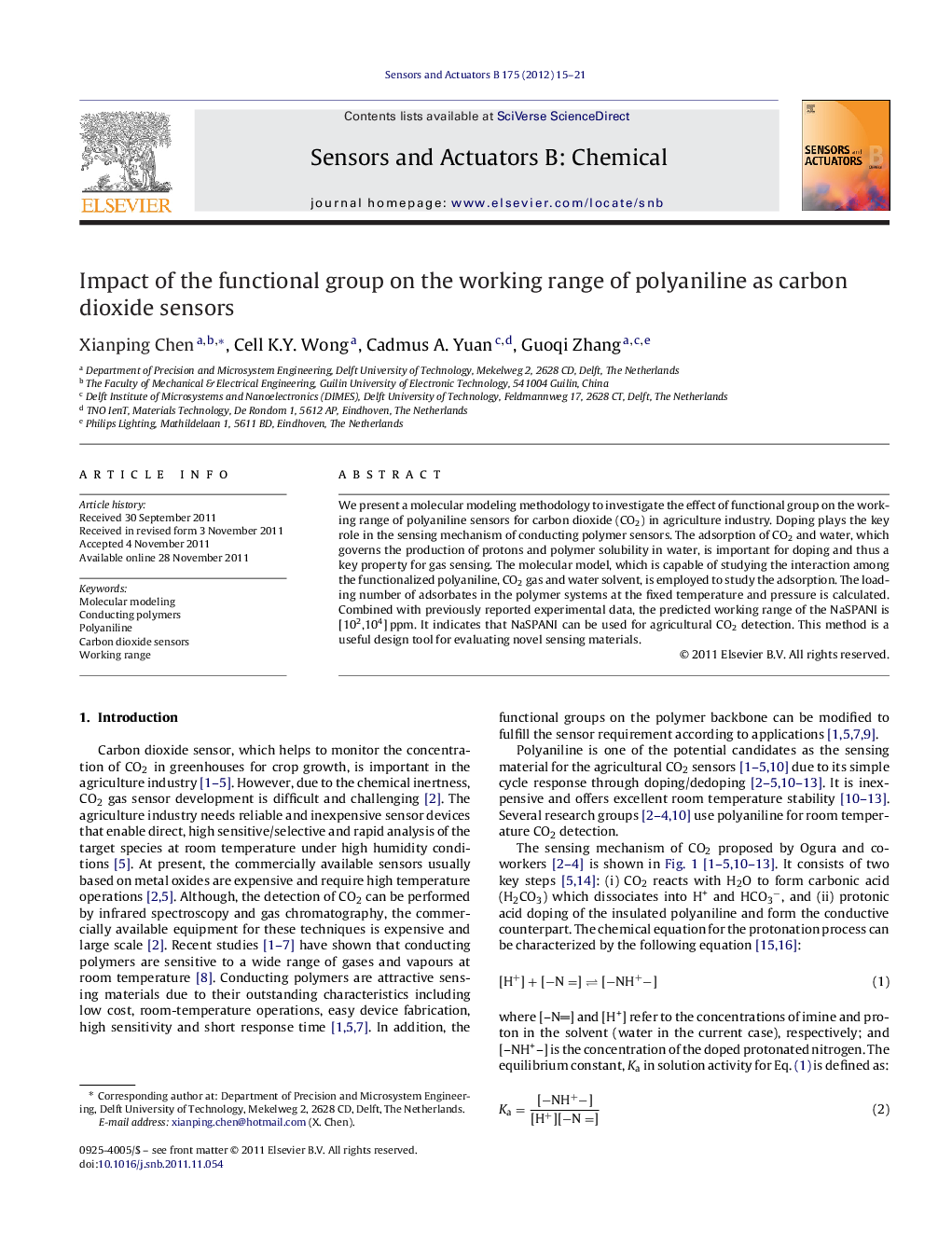| Article ID | Journal | Published Year | Pages | File Type |
|---|---|---|---|---|
| 740539 | Sensors and Actuators B: Chemical | 2012 | 7 Pages |
We present a molecular modeling methodology to investigate the effect of functional group on the working range of polyaniline sensors for carbon dioxide (CO2) in agriculture industry. Doping plays the key role in the sensing mechanism of conducting polymer sensors. The adsorption of CO2 and water, which governs the production of protons and polymer solubility in water, is important for doping and thus a key property for gas sensing. The molecular model, which is capable of studying the interaction among the functionalized polyaniline, CO2 gas and water solvent, is employed to study the adsorption. The loading number of adsorbates in the polymer systems at the fixed temperature and pressure is calculated. Combined with previously reported experimental data, the predicted working range of the NaSPANI is [102,104] ppm. It indicates that NaSPANI can be used for agricultural CO2 detection. This method is a useful design tool for evaluating novel sensing materials.
